
Friday, January 5, 2024
Friday, December 29, 2023
Logos and Branding: Wisconsin* Mystery Logo
A Wrinkle in Logic
Also on March 8, 2018 —
This post was suggested by the word "entanglement' in the previous post.
See as well "Galois (Xor) addition."
The Fandom Thread

A post of Dec. 27 featured the internet threads.net logo below . . .

"In American English the @ can be used to add information about
a sporting event. Where opposing sports teams have their names
separated by a "v" (for versus), the away team can be written first –
and the normal "v" replaced with @ to convey at which team's home
field the game will be played." — Wikipedia
Thursday, December 28, 2023
Basque Country Art Book
Book description at Amazon.com, translated by Google —
|
Las matemáticas como herramienta
Mathematics as a tool by Raúl Ibáñez Torres Kindle edition in Spanish, 2023 Although the relationship between mathematics and art can be traced back to ancient times, mainly in geometric and technical aspects, it is with the arrival of the avant-garde and abstract art at the beginning of the 20th century that mathematics takes on greater and different relevance: as a source of inspiration and as a tool for artistic creation. Let us think, for example, of the importance of the fourth dimension for avant-garde movements or, starting with Kandisnky and later Max Bill and concrete art, the vindication of mathematical thinking in artistic creation. An idea that would have a fundamental influence on currents such as constructivism, minimalism, the fluxus movement, conceptual art, systematic art or optical art, among others. Following this approach, this book analyzes, through a variety of examples and activities, how mathematics is present in contemporary art as a creative tool. And it does so through five branches and the study of some of its mathematical topics: geometry (the Pythagorean theorem), topology (the Moebius strip), algebra (algebraic groups and matrices), combinatorics (permutations and combinations) and recreational mathematics (magic and Latin squares). |
From the book ("Cullinane Diamond Theorem" heading and picture of
book's cover added) —
Publisher: Los Libros de La Catarata (October 24, 2023)
Author: Raúl Ibáñez Torres, customarily known as Raúl Ibáñez
(Ibáñez does not mention Cullinane as the author of the above theorem
in his book (except indirectly, quoting Josefine Lyche), but he did credit
him fully in an earlier article, "The Truchet Tiles and the Diamond Puzzle"
(translation by Google).)
About Ibáñez (translated from Amazon.com by Google):
Mathematician, professor of Geometry at the University of the Basque Country
and scientific disseminator. He is part of the Chair of Scientific Culture of the
UPV/EHU and its blog Cuaderno de Cultura Cientifica. He has been a scriptwriter
and presenter of the program “Una de Mates” on the television program Órbita Laika.
He has collaborated since 2005 on the programs Graffiti and La mechanica del caracol
on Radio Euskadi. He has also been a collaborator and co-writer of the documentary
Hilos de tiempo (2020) about the artist Esther Ferrer. For 20 years he directed the
DivulgaMAT portal, Virtual Center for the Dissemination of Mathematics, and was a
member of the dissemination commission of the Royal Spanish Mathematical Society.
Author of several books, including The Secrets of Multiplication (2019) and
The Great Family of Numbers (2021), in the collection Miradas Matemáticas (Catarata).
He has received the V José María Savirón Prize for Scientific Dissemination
(national modality, 2010) and the COSCE Prize for the Dissemination of Science (2011).
Wednesday, December 27, 2023
Red Dot Award for Vernissage*
Monday, October 23, 2023
For the Church of Stephen King
Saturday, June 3, 2023
Monday, May 29, 2023
Mashup
Wednesday, May 24, 2023
Tuesday, May 23, 2023
“A Mad Day’s Work” (Hat tip to Pierre Cartier)*
Sunday, May 7, 2023
Logos
For the title, see Logos in this journal.
Some examples —
"Please wait as your operating system is initiated."
Saturday, March 12, 2022
Logos and Branding
The "branding" part of this post's title and tag —
|
The scene went from bad to worse. The camerlengo’s torn cassock, having been only laid over his chest by Chartrand, began to slip lower. For a moment, Langdon thought the garment might hold, but that moment passed. The cassock let go, sliding off his shoulders down around his waist. The gasp that went up from the crowd seemed to travel around the globe and back in an instant. Cameras rolled, flashbulbs exploded. On media screens everywhere, the image of the camerlengo’s branded chest was projected, towering and in grisly detail. Some screens were even freezing the image and rotating it 180 degrees. The ultimate Illuminati victory. Langdon stared at the brand on the screens. Although it was the imprint of the square brand he had held earlier, the symbol now made sense. Perfect sense. The marking’s awesome power hit Langdon like a train. Orientation. Langdon had forgotten the first rule of symbology. When is a square not a square? He had also forgotten that iron brands, just like rubber stamps, never looked like their imprints. They were in reverse. Langdon had been looking at the brand’s negative ! As the chaos grew, an old Illuminati quote echoed with new meaning: ‘A flawless diamond, born of the ancient elements with such perfection that all those who saw it could only stare in wonder.’ Langdon knew now the myth was true. Earth, Air, Fire, Water. The Illuminati Diamond. — Dan Brown, Angels & Demons |
I prefer Modal Nietzsche.
Geometric Theology: Logos vs. Antilogos
In a 1999 Yale doctoral dissertation,
"Diabolical Structures in the Poetics of Nikolai Gogol,"
the term "antilogos" occurs 70 times.
Students of poetic structures may compare and contrast . . .
Logos
Antilogos

Thursday, March 10, 2022
Diabolical Poetics
The title of the previous post suggests a search for
Shubnikov in this journal. That search yields a 1999
Yale doctoral dissertation,
"Diabolical Structures in the Poetics of Nikolai Gogol."
A related image:
From "Made for Love" (2021) — Lyle Herringbone:

Monday, March 7, 2022
Friday, February 11, 2022
De Beer’s Consolidated Mine
The misleading image at right above is from the cover of
an edition of Charles Williams's classic 1931 novel
Many Dimensions published in 1993 by Wm. B. Eerdmans.
But seriously . . .
Friday, November 5, 2021
Star Wars: Logos
The three favicons below may be interpreted
as logos representing "A-OK* Space."

"Fans can have the ultimate GAP Band experience
by visiting the members' childhood home and walking
the north Tulsa streets that gave the band its famous
name – Greenwood, Archer and Pine."
— https://www.travelok.com/music-trail/
itineraries/the-gap-band-hometown
*

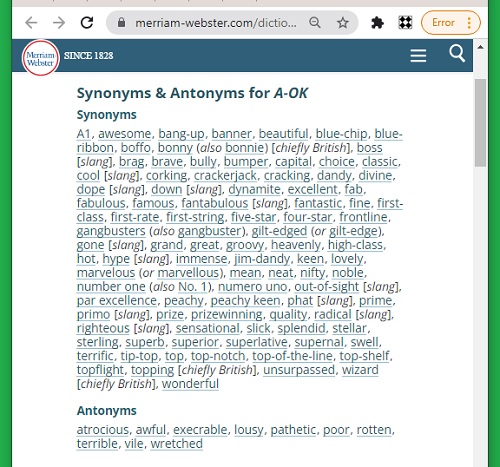
Monday, October 19, 2020
A Moritat for Macalester
The previous post, "Frame Analysis," was about a death
related to Macalester College.
Wikipedia on the man for whom the college was named —
"In the 1870s, Rev. Dr. Edward Duffield Neill turned to
Macalester for sponsorship for the failing institution
in Minnesota known as Jesus College. "
Logos —
Sunday, August 2, 2020
The Sword and the Stone
A post of May 26, 2005, displays, if not the sword,
a place for it —
"The beautiful in mathematics resides in contradiction.
Incommensurability, logoi alogoi, was the first splendor
in mathematics." — Simone Weil, Oeuvres Choisies,
éd. Quarto , Gallimard, 1999, p. 100

Logos Alogos by S. H. Cullinane
"To a mathematician, mathematical entities have their own existence,
they habitate spaces created by their intention. They do things,
things happen to them, they relate to one another. We can imagine
on their behalf all sorts of stories, providing they don't contradict
what we know of them. The drama of the diagonal, of the square…"
— Dennis Guedj, abstract of "The Drama of Mathematics," a talk
to be given this July at the Mykonos conference on mathematics and
narrative. For the drama of the diagonal of the square, see
Thursday, September 12, 2019
Art Logos …
… Continued from previous posts now tagged Art Logos.
"Logos," a Greek word used in philosophy and theology,
is, in modern usage, also a brief form of "logotypes,"
a name for the branding symbols used by businesses.
For some less commercial aspects of the philosophical
concept, see Logo in this journal.
Saturday, July 6, 2019
Mythos and Logos
Mythos
Logos
The six square patterns which, applied as above to the faces of a cube,
form "diamond" and "whirl" patterns, appear also in the logo of a coal-
mining company —
Related material —
Tuesday, November 20, 2018
Logos
Musical accompaniment from Sunday morning —
Update of Nov. 21 —
The reader may contrast the above Squarespace.com logo
(a rather serpentine version of the acronym SS) with a simpler logo
for a square space (the Galois window ):
Monday, November 5, 2018
Sunday, October 14, 2018
Logos
New and old AMS logos —

I prefer the old. Related material —
For an old Crosswicks curse, see that phrase in this journal.
For a new curse, see . . .
"Unsheathe your dagger definitions." — James Joyce.
Monday, May 14, 2018
Logos at Harvard
In 2013, Harvard University Press changed its logo to an abstract "H."
Both logos now accompany a Harvard video first published in 2012,
"The World of Mathematical Reality."
In the video, author Paul Lockhart discusses Varignon's theorem
without naming Varignon (1654-1722) . . .
A related view of "mathematical reality" —
Note the resemblance to Plato's Diamond.
Tuesday, April 10, 2018
Logos
Sunday, February 4, 2018
Logos for Sunday, February 4
"The walls in the back of the room show geometric shapes
that remind us of the logos on a space shuttle. "
— Web page on an Oslo art installation by Josefine Lyche.
See also Subway Art posts.
The translation above was obtained via Google.
The Norwegian original —
"På veggene bakerst i rommer vises geometriske former
som kan minne om logoene på en romferge."
Related logos — Modal Diamond Box in this journal:
Logos for Philosophers
(Suggested by Modal Logic) —
Wednesday, January 10, 2018
Logos
Updates of 9:40 PM ET Jan. 10
to 5:45 AM ET the next day:
See a letter from the AMS on their new logo.


Recent revision (pre-2018) of the former AMS logo
The Society's letter describes perceptions of the pre-2018 logo —
"… market research on our current logo revealed that
the connection between a Greek temple and
a mathematical society has become increasingly tenuous
among non-members and younger mathematicians, who
associate the Greek temple with a financial institution."
The omission of the alleged motto of Plato's Academy,
AGEOMETRETOS ME EISITO, in the recent (pre-2018)
revision of the logo was part of the Society's ongoing
process of politically correct dumbing-down. That omission
may have influenced the perception of the logo as picturing
a Greek temple rather than the Academy.
Some related remarks from 2005 —
Monday, December 4, 2017
Sunday, August 13, 2017
Logos
In memoriam —
Zadeh is known for the unfortunate phrase "fuzzy logic."
Not-so-fuzzy related material —
“Lord Arglay had a suspicion that the Stone would be
purely logical. Yes, he thought, but what, in that sense,
were the rules of its pure logic?”
—Many Dimensions (1931), by Charles Williams
Wednesday, March 29, 2017
Art Space Illustrated
Another view of the previous post's art space —
More generally, see Solomon's Cube in Log24.
See also a remark from Stack Exchange in yesterday's post Backstory,
and the Stack Exchange math logo below, which recalls the above
cube arrangement from "Affine groups on small binary spaces" (1984).
Wednesday, August 10, 2016
Logos and Logic
"Logos and logic, crystal hypothesis,
Incipit and a form to speak the word
And every latent double in the word…."
— Wallace Stevens,
"Notes Toward a Supreme Fiction,"
Section I, Canto VIII
Wednesday, June 24, 2015
Logos
The Santa Fe Institute logo, together with the previous post,
suggests a review of Whirligig and Quaternion for Goldstein.
Wednesday, August 27, 2014
Altar
"To every man upon this earth,
Death cometh soon or late.
And how can man die better
Than facing fearful odds,
For the ashes of his fathers,
and the temples of his gods…?"
— Macaulay, quoted in the April 2013 film "Oblivion"
"Leave a space." — Tom Stoppard, "Jumpers"
Related material: The August 16, 2014, sudden death in Scotland
of an architect of the above Cardross seminary, and a Log24 post,
Plato's Logos, from the date of the above photo: June 26, 2010.
See also…
Here “eidolon” should instead be “eidos .”
An example of eidos — Plato's diamond (from the Meno ) —

Thursday, August 2, 2012
Logos
(Continued from December 26th, 2011)
Some material at math.stackexchange.com related to
yesterday evening's post on Elementary Finite Geometry—
Questions on this topic have recently been
discussed at Affine plane of order 4? and at
Turning affine planes into projective planes.
(For a better discussion of the affine plane of order 4,
see Affine Planes and Mutually Orthogonal Latin Squares
at the website of William Cherowitzo, professor at UC Denver.)
Saturday, November 5, 2011
Shadows
Between the idea
And the reality
Between the motion
And the act
Falls the Shadow
— T. S. Eliot, "The Hollow Men"
A passage quoted here on this date in 2005—
Douglas Hofstadter on his magnum opus:
“… I realized that to me,
Gödel and Escher and Bach
were only shadows
cast in different directions
by some central solid essence."
This refers to Hofstadter's cover image:
Also from this date in 2005:

Thursday, July 1, 2010
Plato’s Code
John Allen Paulos yesterday at Twitter—
"Plato's code cracked? http://bit.ly/ad6k1S
Fascinating if not a hoax or hype."
The story that Paulos linked to is about a British
academic who claims to have found some
symbolism hidden in Plato's writings by
splitting each into 12 parts and correlating
the 12 parts with semitones of a musical scale.
I prefer a different approach to Plato that is
related to the following hoax and hype—
HOAX:
From Dan Brown's novel Angels & Demons (2000)—

HYPE:
This four-elements diamond summarizes the classical
four elements and four qualities neatly, but some scholars
might call the figure "hype" since it deals with an academically
disreputable subject, alchemy, and since its origin is unclear.
For the four elements' role in some literature more respectable
than Dan Brown's, see Poetry's Bones.
Although an author like Brown might spin the remarks
below into a narrative— The Plato Code — they are
neither hoax nor hype.
NOT HOAX:

NOT HYPE:
For related non-hoax, non-hype remarks, see
The Rational Enterprise: Logos in Plato's Theaetetus,
by Rosemary Desjardins.
Those who prefer hoax and hype in their philosophy may consult
the writings of, say, Barbara Johnson, Rosalind Krauss, and—
in yesterday's NY Times's "The Stone" column— Nancy Bauer.

— The New York Times
Sunday, June 27, 2010
Bright Star (continued)
From Epiphany 2010—
The more industrious scholars will derive considerable pleasure from describing how the art-history professors and journalists of the period 1945-75, along with so many students, intellectuals, and art tourists of every sort, actually struggled to see the paintings directly, in the old pre-World War II way, like Plato's cave dwellers watching the shadows, without knowing what had projected them, which was the Word."
– Tom Wolfe, The Painted Word
Pennsylvania Lottery yesterday—
Saturday, June 26, 2010: Midday 846, Evening 106
Interpretation—
Context:
Yesterday's morning post, Plato's Logos
Yesterday's evening post, Bold and Brilliant Emergence
Poem 846, Oxford Book of English Verse, 1919:
"bird-song at morning and star-shine at night"
Poem 106, Oxford Book of English Verse, 1919:
" All labourers draw home at even"
The number 106 may also be read as 1/06, the date of Epiphany.
Posts on Epiphany 2010—
9:00 AM Epiphany Revisited
12:00 PM Brightness at Noon
9:00 PM The Difference
Related material—
Plato's
Tombstone
Saturday, June 26, 2010
Bold and Brilliant Emergence
"Rosemary Desjardins argues boldly and brilliantly that the Theaetetus contains not only an answer to the question of the character of knowledge, but considerably more besides — an outline of a Platonic ontology. That ontology is neither materialist nor idealist (it is not a theory of forms), but like the twentieth century theory known as generative emergence holds that beings are particular interactive combinations of material elements. On this view, while wholes (for example, words, to use a Platonic model) may be analyzed into their elemental parts (letters), each whole has a property or quality separate from the aggregated properties of its parts."
— Stephen G. Salkever, 1991 review of The Rational Enterprise : Logos in Plato's Theaetetus (SUNY Press, 1990)
See also "strong emergence" in this journal.
Plato’s Logos
"The present study is closely connected with a lecture* given by Prof. Ernst Cassirer at the Warburg Library whose subject was 'The Idea of the Beautiful in Plato's Dialogues'…. My investigation traces the historical destiny of the same concept…."
* See Cassirer's Eidos und Eidolon : Das Problem des Schönen und der Kunst in Platons Dialogen, in Vorträge der Bibliothek Warburg II, 1922/23 (pp. 1–27). Berlin and Leipzig, B.G. Teubner, 1924.
— Erwin Panofsky, Idea: A Concept in Art Theory, foreword to the first German edition, Hamburg, March 1924
On a figure from Plato's Meno—

The above figures illustrate Husserl's phrase "eidetic variation"—
a phrase based on Plato's use of eidos, a word
closely related to the word "idea" in Panofsky's title.
For remarks by Cassirer on the theory of groups, a part of
mathematics underlying the above diamond variations, see
his "The Concept of Group and the Theory of Perception."
Sketch of some further remarks—

The Waterfield question in the sketch above
is from his edition of Plato's Theaetetus
(Penguin Classics, 1987).
The "design theory" referred to in the sketch
is that of graphic design, which includes the design
of commercial logos. The Greek word logos
has more to do with mathematics and theology.
"If there is one thread of warning that runs
through this dialogue, from beginning to end,
it is that verbal formulations as such are
shot through with ambiguity."
— Rosemary Desjardins, The Rational Enterprise:
Logos in Plato's Theaetetus, SUNY Press, 1990
Related material—
Wednesday, June 23, 2010
Group Theory and Philosophy
Excerpts from "The Concept of Group and the Theory of Perception,"
by Ernst Cassirer, Philosophy and Phenomenological Research,
Volume V, Number 1, September, 1944.
(Published in French in the Journal de Psychologie, 1938, pp. 368-414.)
The group-theoretical interpretation of the fundaments of geometry is,
from the standpoint of pure logic, of great importance, since it enables us to
state the problem of the "universality" of mathematical concepts in simple
and precise form and thus to disentangle it from the difficulties and ambigui-
ties with which it is beset in its usual formulation. Since the times of the
great controversies about the status of universals in the Middle Ages, logic
and psychology have always been troubled with these ambiguities….
Our foregoing reflections on the concept of group permit us to define more
precisely what is involved in, and meant by, that "rule" which renders both
geometrical and perceptual concepts universal. The rule may, in simple
and exact terms, be defined as that group of transformations with regard to
which the variation of the particular image is considered. We have seen
above that this conception operates as the constitutive principle in the con-
struction of the universe of mathematical concepts….
…Within Euclidean geometry,
a "triangle" is conceived of as a pure geometrical "essence," and this
essence is regarded as invariant with respect to that "principal group" of
spatial transformations to which Euclidean geometry refers, viz., displace-
ments, transformations by similarity. But it must always be possible to
exhibit any particular figure, chosen from this infinite class, as a concrete
and intuitively representable object. Greek mathematics could not
dispense with this requirement which is rooted in a fundamental principle
of Greek philosophy, the principle of the correlatedness of "logos" and
"eidos." It is, however, characteristic of the modern development of
mathematics, that this bond between "logos" and "eidos," which was indis-
soluble for Greek thought, has been loosened more and more, to be, in the
end, completely broken….
…This process has come to its logical
conclusion and systematic completion in the development of modern group-
theory. Geometrical figures are no longer regarded as fundamental, as
date of perception or immediate intuition. The "nature" or "essence" of a
figure is defined in terms of the operations which may be said to
generate the figure. The operations in question are, in turn, subject to
certain group conditions….
…What we
find in both cases are invariances with respect to variations undergone by
the primitive elements out of which a form is constructed. The peculiar
kind of "identity" that is attributed to apparently altogether heterogen-
eous figures in virtue of their being transformable into one another by means
of certain operations defining a group, is thus seen to exist also in the
domain of perception. This identity permits us not only to single out ele-
ments but also to grasp "structures" in perception. To the mathematical
concept of "transformability" there corresponds, in the domain of per-
ception, the concept of "transposability." The theory of the latter con-
cept has been worked out step by step and its development has gone through
various stages….
…By the acceptance of
"form" as a primitive concept, psychological theory has freed it from the
character of contingency which it possessed for its first founders. The inter-
pretation of perception as a mere mosaic of sensations, a "bundle" of simple
sense-impressions has proved untenable….
…In the domain of mathematics this state of affairs mani-
fests itself in the impossibility of searching for invariant properties of a
figure except with reference to a group. As long as there existed but one
form of geometry, i.e., as long as Euclidean geometry was considered as the
geometry kat' exochen this fact was somehow concealed. It was possible
to assume implicitly the principal group of spatial transformations that lies
at the basis of Euclidean geometry. With the advent of non-Euclidean
geometries, however, it became indispensable to have a complete and sys-
tematic survey of the different "geometries," i.e., the different theories of
invariancy that result from the choice of certain groups of transformation.
This is the task which F. Klein set to himself and which he brought to a
certain logical fulfillment in his Vergleichende Untersuchungen ueber neuere
geometrische Forschungen….
…Without discrimination between the
accidental and the substantial, the transitory and the permanent, there
would be no constitution of an objective reality.
This process, unceasingly operative in perception and, so to speak, ex-
pressing the inner dynamics of the latter, seems to have come to final per-
fection, when we go beyond perception to enter into the domain of pure
thought. For the logical advantage and peculiar privilege of the pure con –
cept seems to consist in the replacement of fluctuating perception by some-
thing precise and exactly determined. The pure concept does not lose
itself in the flux of appearances; it tends from "becoming" toward "being,"
from dynamics toward statics. In this achievement philosophers have
ever seen the genuine meaning and value of geometry. When Plato re-
gards geometry as the prerequisite to philosophical knowledge, it is because
geometry alone renders accessible the realm of things eternal; tou gar aei
ontos he geometrike gnosis estin. Can there be degrees or levels of objec-
tive knowledge in this realm of eternal being, or does not rather knowledge
attain here an absolute maximum? Ancient geometry cannot but answer
in the affirmative to this question. For ancient geometry, in the classical
form it received from Euclid, there was such a maximum, a non plus ultra.
But modern group theory thinking has brought about a remarkable change
In this matter. Group theory is far from challenging the truth of Euclidean
metrical geometry, but it does challenge its claim to definitiveness. Each
geometry is considered as a theory of invariants of a certain group; the
groups themselves may be classified in the order of increasing generality.
The "principal group" of transformations which underlies Euclidean geome-
try permits us to establish a number of properties that are invariant with
respect to the transformations in question. But when we pass from this
"principal group" to another, by including, for example, affinitive and pro-
jective transformations, all that we had established thus far and which,
from the point of view of Euclidean geometry, looked like a definitive result
and a consolidated achievement, becomes fluctuating again. With every
extension of the principal group, some of the properties that we had taken
for invariant are lost. We come to other properties that may be hierar-
chically arranged. Many differences that are considered as essential
within ordinary metrical geometry, may now prove "accidental." With
reference to the new group-principle they appear as "unessential" modifica-
tions….
… From the point of view of modern geometrical systematization,
geometrical judgments, however "true" in themselves, are nevertheless not
all of them equally "essential" and necessary. Modern geometry
endeavors to attain progressively to more and more fundamental strata of
spatial determination. The depth of these strata depends upon the com-
prehensiveness of the concept of group; it is proportional to the strictness of
the conditions that must be satisfied by the invariance that is a universal
postulate with respect to geometrical entities. Thus the objective truth
and structure of space cannot be apprehended at a single glance, but have to
be progressively discovered and established. If geometrical thought is to
achieve this discovery, the conceptual means that it employs must become
more and more universal….
Saturday, August 29, 2009
Saturday August 29, 2009
Father's Day
last year–

"For further details,
click on the well."
"The kind of movement Olson urges is
an inward deepening of the image,
an in-sighting of the superimposed
levels of significance within it.
This is the very mode that Jung
suggested for grasping dreams–
not as a sequence in time,
but as revolving around
a nodal complex."
And from Feb. 29, 2008:

and the following day:

— Heraclitus
Wednesday, June 3, 2009
Wednesday June 3, 2009
to Four Quartets:

The Dissertations of Maximus Tyrius, translated from the Greek by Thomas Taylor, printed by C. Whittingham, London, for the translator, 1804, Vol. II, p. 55:
"You see the mutation of bodies, and the transition of generation, a path upwards and downwards according to Heraclitus; and again, as he says, one thing living the death, but dying the life of another. Thus fire lives the death of earth, and air lives the death of fire; water lives the death of air, and earth lives the death of water. You see a succession of life, and a mutation of bodies, both of which are the renovation of the whole."

For an interpretation
of the above figure
in terms of the classical
four elements discussed
in Four Quartets,
in Dissertations, and
in Angels & Demons,
see
Notes on Mathematics
and Narrative.
For a more entertaining
interpretation, see Fritz Leiber's
classic story "Damnation Morning."
Thursday, March 19, 2009
Thursday March 19, 2009
Quintessence:
A Glass Bead Game
by Charles Cameron —
This 1495 image is found in
The Janus Faces of Genius:
The Role of Alchemy
in Newton's Thought,
by B. J. T. Dobbs,
Cambridge U. Press,
2002, p. 85
From
Kernel of Eternity:

From
Sacerdotal Jargon
at Harvard:

From "The Fifth Element"
(1997, Milla Jovovich
and Bruce Willis) —
The crossing of the beams:
Happy birthday, Bruce Willis.
Tuesday, March 17, 2009
Tuesday March 17, 2009

The Square of Oppositon
at Stanford Encylopedia of Philosophy

The Square of Opposition
in its original form
"The diagram above is from a ninth century manuscript of Apuleius' commentary on Aristotle's Perihermaneias, probably one of the oldest surviving pictures of the square."
— Edward Buckner at The Logic Museum
From the webpage "Semiotics for Beginners: Paradigmatic Analysis," by Daniel Chandler:

The Semiotic Square
"The structuralist semiotician Algirdas Greimas introduced the semiotic square (which he adapted from the 'logical square' of scholastic philosophy) as a means of analysing paired concepts more fully (Greimas 1987,* xiv, 49). The semiotic square is intended to map the logical conjunctions and disjunctions relating key semantic features in a text. Fredric Jameson notes that 'the entire mechanism… is capable of generating at least ten conceivable positions out of a rudimentary binary opposition' (in Greimas 1987,* xiv). Whilst this suggests that the possibilities for signification in a semiotic system are richer than the either/or of binary logic, but that [sic] they are nevertheless subject to 'semiotic constraints' – 'deep structures' providing basic axes of signification."
* Greimas, Algirdas (1987): On Meaning: Selected Writings in Semiotic Theory (trans. Paul J Perron & Frank H Collins). London: Frances Pinter
Another version of the semiotic square:

Here is a more explicit figure representing the Klein group:
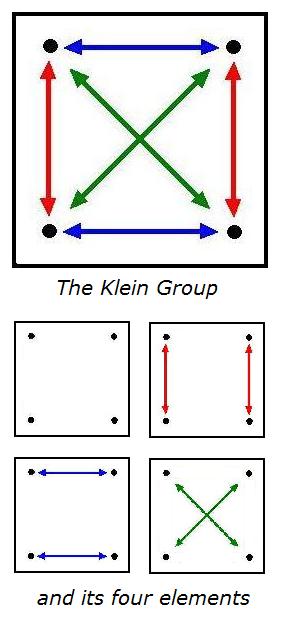
There is also the logical
diamond of opposition —

A semiotic (as opposed to logical)
diamond has been used to illustrate
remarks by Fredric Jameson,
a Marxist literary theorist:
|
"Introduction to Algirdas Greimas, Module on the Semiotic Square," by Dino Felluga at Purdue University–
The semiotic square has proven to be an influential concept not only in narrative theory but in the ideological criticism of Fredric Jameson, who uses the square as "a virtual map of conceptual closure, or better still, of the closure of ideology itself" ("Foreword"* xv). (For more on Jameson, see the [Purdue University] Jameson module on ideology.) Greimas' schema is useful since it illustrates the full complexity of any given semantic term (seme). Greimas points out that any given seme entails its opposite or "contrary." "Life" (s1) for example is understood in relation to its contrary, "death" (s2). Rather than rest at this simple binary opposition (S), however, Greimas points out that the opposition, "life" and "death," suggests what Greimas terms a contradictory pair (-S), i.e., "not-life" (-s1) and "not-death" (-s2). We would therefore be left with the following semiotic square (Fig. 1): 
As Jameson explains in the Foreword to Greimas' On Meaning, "-s1 and -s2"—which in this example are taken up by "not-death" and "not-life"—"are the simple negatives of the two dominant terms, but include far more than either: thus 'nonwhite' includes more than 'black,' 'nonmale' more than 'female'" (xiv); in our example, not-life would include more than merely death and not-death more than life.
* Jameson, Fredric. "Foreword." On Meaning: Selected Writings in Semiotic Theory. By Algirdas Greimas. Trans. Paul J. Perron and Frank H. Collins. Minneapolis: U of Minnesota P, 1976.
|
— The Gameplayers of Zan, by M.A. Foster
"For every kind of vampire,
there is a kind of cross."
— Thomas Pynchon,
Gravity's Rainbow
Crosses used by semioticians
to baffle their opponents
are illustrated above.
Some other kinds of crosses,
and another kind of opponent:
|
Monday, July 11, 2005
Logos
for St. Benedict's Day Click on either of the logos below for religious meditations– on the left, a Jewish meditation from the Conference of Catholic Bishops; on the right, an Aryan meditation from Stormfront.org. Both logos represent different embodiments of the "story theory" of truth, as opposed to the "diamond theory" of truth. Both logos claim, in their own ways, to represent the eternal Logos of the Christian religion. I personally prefer the "diamond theory" of truth, represented by the logo below.
See also the previous entry Sunday, July 10, 2005
Mathematics
and Narrative Click on the title for a narrative about
Nikolaos K. Artemiadis,

"First of all, I'd like to
— Remark attributed to Plato
|
||||||||
Monday, March 2, 2009
Monday March 2, 2009
Joyce's Nightmare
continues
Today in History – March 2
|

|
From Gravity's Rainbow (Penguin Classics, 1995), page 563:
"He brings out the mandala he found.
Slothrop gives him the mandala. He hopes it will work like the mantra that Enzian told him once, mba-kayere (I am passed over), mba-kayere… a spell […]. A mezuzah. Safe passage through a bad night…."
In lieu of Slothrop's mandala, here is another…
Christ and the Four Elements
This 1495 image is found in
For further details,
click on any of the three mandalas above. |

Happy birthday to
Tom Wolfe, author of
The Painted Word.
Sunday, November 16, 2008
Sunday November 16, 2008
Observations suggested by an article on author Lewis Hyde– "What is Art For?"– in today's New York Times Magazine:
Margaret Atwood (pdf) on Lewis Hyde's
Trickster Makes This World: Mischief, Myth, and Art —
"Trickster," says Hyde, "feels no anxiety when he deceives…. He… can tell his lies with creative abandon, charm, playfulness, and by that affirm the pleasures of fabulation." (71) As Hyde says, "… almost everything that can be said about psychopaths can also be said about tricksters," (158), although the reverse is not the case. "Trickster is among other things the gatekeeper who opens the door into the next world; those who mistake him for a psychopath never even know such a door exists." (159)
What is "the next world"? It might be the Underworld….
The pleasures of fabulation, the charming and playful lie– this line of thought leads Hyde to the last link in his subtitle, the connection of the trickster to art. Hyde reminds us that the wall between the artist and that American favourite son, the con-artist, can be a thin one indeed; that craft and crafty rub shoulders; and that the words artifice, artifact, articulation and art all come from the same ancient root, a word meaning to join, to fit, and to make. (254) If it’s a seamless whole you want, pray to Apollo, who sets the limits within which such a work can exist. Tricksters, however, stand where the door swings open on its hinges and the horizon expands: they operate where things are joined together, and thus can also come apart.
The Trickster
and the Paranormal
and
Martin Gardner on
a disappearing cube —
|
"What happened to that… cube?"
Apollinax laughed until his eyes teared. "I'll give you a hint, my dear. Perhaps it slid off into a higher dimension." "Are you pulling my leg?" "I wish I were," he sighed. "The fourth dimension, as you know, is an extension along a fourth coordinate perpendicular to the three coordinates of three-dimensional space. Now consider a cube. It has four main diagonals, each running from one corner through the cube's center to the opposite corner. Because of the cube's symmetry, each diagonal is clearly at right angles to the other three. So why shouldn't a cube, if it feels like it, slide along a fourth coordinate?" — "Mr. Apollinax Visits New York," by Martin Gardner, Scientific American, May 1961, reprinted in The Night is Large |
For such a cube, see

ashevillecreative.com
this illustration in
The Religion of Cubism
(and the four entries
preceding it —
Log24, May 9, 2003).
Beware of Gardner's
"clearly" and other lies.
Thursday, October 23, 2008
Thursday October 23, 2008
|
Along Came
a Spider
A phrase from 1959
"Look, Buster, |
… Todo lo sé
por el lucero puro
que brilla en la diadema
de la Muerte.
The link to
"Buffalo Soldier"
in this entry
is in memory of
Vittorio Foa, who
died Monday
at his home
outside Rome.
Friday, July 11, 2008
Friday July 11, 2008
|
The HSBC Logo Designer — Henry Steiner
Born in Austria and raised in New York, Steiner was educated at Yale under Paul Rand and attended the Sorbonne as a Fulbright Fellow. He is a past President of Alliance Graphique Internationale. Other professional affiliations include the American Institute of Graphic Arts, Chartered Society of Designers, Design Austria, and the New York Art Directors' Club. His Cross-Cultural Design: Communicating in the Global Marketplace was published by Thames and Hudson (1995). |
from the past —

Charles Taylor,
"… the object sets up
See also Talking of Michelangelo.
|
Related material
from today —
Escape from a
cartoon graveyard:

Friday July 11, 2008
"Religions are hardy."
— TIME magazine,
issue dated July 14
"I confess I do not believe in time."
— Vladimir Nabokov
"I can hardly do better than
go back to the Greeks."
— G. H. Hardy
Figure 1:
The Greeks

Figure 2:
The Irrational
Sunday, October 14, 2007
Sunday October 14, 2007
|
"Logos and logic, crystal hypothesis,
— Wallace Stevens, |
Yesterday's meditation ("Simon's Shema") on the interpenetration of opposites continues:
"The fundamental conception of Tantric Buddhist metaphysics, namely, yuganaddha, signifies the coincidence of opposites. It is symbolized by the conjugal embrace (maithuna or kama-kala) of a god and goddess or a Buddha and his consort (signifying karuna and sunyata or upaya and prajna, respectively), also commonly depicted in Tantric Buddhist iconography as the union of vajra (diamond sceptre) and padme (lotus flower). Thus, yuganaddha essentially means the interpenetration of opposites or dipolar fusion, and is a fundamental restatement of Hua-yen theoretic structures."
— p. 148 in "Part II: A Whiteheadian Process Critique of Hua-yen Buddhism," in Process Metaphysics and Hua-Yen Buddhism: A Critical Study of Cumulative Penetration vs. Interpenetration (SUNY Series in Systematic Philosophy), by Steve Odin, State University of New York Press, 1982
And on p. 163 of Odin, op. cit., in "Part III: Theology of the Deep Unconscious: A Reconstruction of Process Theology," in the section titled "Whitehead's Dipolar God as the Collective Unconscious"–
"An effort is made to transpose Whitehead's theory of the dipolar God into the terms of the collective unconscious, so that now the dipolar God is to be comprehended not as a transcendent deity, but the deepest dimension and highest potentiality of one's own psyche."
Odin obtained his Ph.D. degree from the Department of Philosophy at the State University of New York (SUNY) at Stony Brook in 1980. (See curriculum vitae (pdf).)
For an academic review of Odin's book, see David Applebaum, Philosophy East and West, Vol. 34 (1984), pp. 107-108.
It is perhaps worth noting, in light of the final footnote of Mark D. Brimblecombe's Ph.D. thesis "Dipolarity and God" quoted yesterday, that "tantra" is said to mean "loom." For some less-academic background on the Tantric iconography Odin describes, see the webpage "Love and Passion in Tantric Buddhist Art." For a fiction combining love and passion with the word "loom" in a religious context, see Clive Barker's Weaveworld. This fiction– which is, if not "supreme" in the Wallace Stevens sense, at least entertaining– may correspond to some aspects of the deep Jungian psychological reality discussed by Odin.
Arendt and Heidegger
Click on image for details.
Wednesday, August 1, 2007
Wednesday August 1, 2007
8:00:14 AM:
Cheap Epiphany
|
SPORTS OF THE TIMES
Restoring the Faith
By SELENA ROBERTS What good is a nadir if it's denied or ignored? What's the value of reaching the lowest of the low if it can't buy a cheap epiphany? |
|
Pennsylvania Lottery on the Feast of St. Ignatius Loyola: |
|

|

|
Restoring the Booze:
A Look at the 50's-

Another Epiphany:
Box-style I Ching, January 6, 1989
(Click on image for background.)
Detail:
Related material:
Logos and Logic
and Diagon Alley.
"What a swell
party this is."
— adapted from
Cole Porter
Wednesday, September 20, 2006
Wednesday September 20, 2006
Public Space
"… the Danish cartoons crisis last March showed 'two world views colliding in public space with no common point of reference.'"
— George Carey, Archbishop of Canterbury from 1991 to 2002, quoted in today's London Times.
Related material:
Geometry and Christianity
(Google search yielding
"about 1,540,000" results)
Geometry and Islam
(Google search yielding
"about 1,580,000" results)

A Public Space

— Motto of
Plato's Academy
Log24 on Feb. 15, 2006:
|
If we replace the Chinese word "I" (change, transformation) with the word "permutation," the relevance of Western mathematics (which some might call "the Logos") to the I Ching ("Changes Classic") beomes apparent.
Related material:
Hitler's Still Point, Jung's Imago, Solomon's Cube, Geometry of the I Ching, and Globe Award. |
For the relevance of Plato to
Islam, see David Wade's
Pattern in Islamic Art
and a Google search on
Plato and Islam
("about 1,680,000" results).
— Heraclitus of Ephesus, about 500 B.C.
Wednesday, February 15, 2006
Wednesday February 15, 2006
Writes Screenplay
About God, Life & Death
These topics may be illuminated
by a study of the Chinese classics.

If we replace the Chinese word "I"
(change, transformation) with the
word "permutation," the relevance
of Western mathematics (which
some might call "the Logos") to
the I Ching ("Changes Classic")
beomes apparent.
Related material:
Hitler's Still Point,
Jung's Imago,
Solomon's Cube,
Geometry of the I Ching,
and Globe Award.
Yesterday's Valentine
may also have some relevance.
Friday, January 20, 2006
Friday January 20, 2006
"Wherefore let it hardly… be… thought that the prisoner… was at his best a onestone parable…
for… pathetically few… cared… to doubt… the canonicity of his existence as a tesseract."
— Finnegans Wake, page 100, abridged
"… we have forgotten that we were angels and painted ourselves into a corner
of resource extraction and commodification of ourselves."
— A discussion, in a draft of a paper (rtf) attributed to Josh Schultz,
of the poem "Diamond" by Attila Jozsef
Commodification of
the name Cullinane:
See the logos at
cullinane.com,
a design firm with
the motto

To adapt a phrase from
Finnegans Wake, the
"fourstone parable" below
is an attempt to
decommodify my name.
Fourstone Parable:
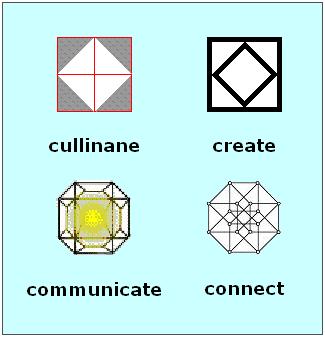
(See also yesterday's "Logos."
The "communicate" logo is taken from
an online library at Calvin College;
the "connect" logo is a commonly
available picture of a tesseract
(Coxeter, Regular Polytopes, p. 123),
and the other two logos
are more or less original.)
For a more elegant
four-diamond figure, see
Jung and the Imago Dei.
Saturday, December 24, 2005
Saturday December 24, 2005
(continued)

The figures are:
A symbol of Apollo from
Balanchine's Birthday and
A Minature Rosetta Stone,
a symbol of pure reason from
Visible Mathematics and
Analogical Train of Thought,
a symbol of Venus from
Why Me? and
To Graves at the Winter Solstice,
and, finally, a more
down-to-earth symbol,
adapted from a snowflake in

Those who prefer their
theological art on the scary side
may enjoy the
Christian Snowflake
link in the comments on
the "Logos" entry of
Orthodox Easter (May 1), 2005.
Wednesday, November 16, 2005
Wednesday November 16, 2005
"The best of the books are the ones… where the allegory is at a minimum and the images just flow."
"'Everything began with images,' Lewis wrote…."
"We go to the writing of the marvellous, and to children’s books, for stories, certainly, and for the epic possibilities of good and evil in confrontation, not yet so mixed as they are in life. But we go, above all, for imagery: it is the force of imagery that carries us forward. We have a longing for inexplicable sublime imagery…."
"The religious believer finds consolation, and relief, too, in the world of magic exactly because it is at odds with the necessarily straitened and punitive morality of organized worship, even if the believer is, like Lewis, reluctant to admit it. The irrational images– the street lamp in the snow and the silver chair and the speaking horse– are as much an escape for the Christian imagination as for the rationalist, and we sense a deeper joy in Lewis’s prose as it escapes from the demands of Christian belief into the darker realm of magic. As for faith, well, a handful of images is as good as an armful of arguments, as the old apostles always knew."
Click on pictures for details.
See also Windmills and
Verbum sat sapienti?
as well as
at Calvin College
on Simone Weil,
Charles Williams,
Dante, and
"the way of images."
Saturday, June 4, 2005
Saturday June 4, 2005
Drama of the Diagonal,
continued
"I could name other writers
who share this sense of a world
larger than ourselves; their writing provides
a field in which something like
a sacramental imagination is clearly at play."
but that which extends meaning
from what is directly given
to the whole context in which it is given,
including a sense of a world."
"A Primitive Like an Orb":
X
It is a giant, always, that is evolved, To be in scale, unless virtue cuts him, snips Both size and solitude or thinks it does, As in a signed photograph on a mantelpiece. But the virtuoso never leaves his shape, Still on the horizon elongates his cuts, And still angelic and still plenteous, Imposes power by the power of his form.
XI
Here, then, is an abstraction given head, A giant on the horizon, given arms, A massive body and long legs, stretched out, A definition with an illustration, not Too exactly labeled, a large among the smalls Of it, a close, parental magnitude, At the center of the horizon, concentrum, grave And prodigious person, patron of origins.
XII
That's it. The lover writes, the believer hears, The poet mumbles and the painter sees, Each one, his fated eccentricity, As a part, but part, but tenacious particle, Of the skeleton of the ether, the total Of letters, prophecies, perceptions, clods Of color, the giant of nothingness, each one And the giant ever changing, living in change.
Related material
(Click on pictures
for details.)
Logos Alogos
by S. H. Cullinane
Logos Alogos II:
Horizon
See also
Subject and Predicates and
The Quality of Diamond.
Thursday, May 26, 2005
Thursday May 26, 2005
Drama of the Diagonal
resides in contradiction.
Incommensurability, logoi alogoi, was
the first splendor in mathematics."
— Simone Weil, Oeuvres Choisies,
éd. Quarto , Gallimard, 1999, p. 100

Logos Alogos
by S. H. Cullinane
"To a mathematician, mathematical entities have their own existence, they habitate spaces created by their intention. They do things, things happen to them, they relate to one another. We can imagine on their behalf all sorts of stories, providing they don't contradict what we know of them. The drama of the diagonal, of the square…"
— Dennis Guedj, abstract of "The Drama of Mathematics," a talk to be given this July at the Mykonos conference on mathematics and narrative.
For the drama of the diagonal of the square, see
Sunday, May 1, 2005
Sunday May 1, 2005
Harvard's Barry Mazur on
one mathematical style:
"It’s the barest, most Beckett-like vocabulary
that incorporates the theory and nothing else."
Samuel Beckett, Quad (1981):

A Jungian on this six-line logo:
"They are the same six lines
that exist in the I Ching….
Now observe the square more closely:
four of the lines are of equal length,
the other two are longer….
For this reason symmetry
cannot be statically produced
and a dance results."
— Marie-Louise von Franz,
Number and Time (1970),
Northwestern U. Press
paperback, 1979, p. 108
A related logo from
Columbia University's
Department of Art History
and Archaeology:

Also from that department:

Meyer Schapiro Professor
of Modern Art and Theory:
"There is no painter in the West
who can be unaware of
the symbolic power
of the cruciform shape
and the Pandora's box
of spiritual reference
that is opened
once one uses it."
"In the garden of Adding
live Even and Odd…"
— The Midrash Jazz Quartet in
City of God, by E. L. Doctorow
THE GREEK CROSS
are the same length.
Here, for reference, is a Greek cross
within a nine-square grid:

Related religious meditation for
Doctorow's "Garden of Adding"…
Types of Greek cross
illustrated in Wikipedia
under "cross":

THE BAPTISMAL CROSS

a Greek cross, which is superimposed
on a Greek 'chi,' the first letter
of the Greek word for 'Christ.'
Since the number eight is symbolic
of rebirth or regeneration,
this cross is often used
as a baptismal cross.
Related material:

Fritz Leiber's "spider"
or "double cross" logo.
See Why Me? and
A Shot at Redemption.
Happy Orthodox Easter.
Friday, September 17, 2004
Friday September 17, 2004
God is in…
The Details
From an entry for Aug. 19, 2003 on
conciseness, simplicity, and objectivity:
Above: Dr. Harrison Pope, Harvard professor of psychiatry, demonstrates the use of the Wechsler Adult Intelligence Scale "block design" subtest. Another Harvard psychiatrist, Armand Nicholi, is in the news lately with his book The Question of God: C.S. Lewis and Sigmund Freud Debate God, Love, Sex, and the Meaning of Life.
For the meaning of the Old-Testament logos above, see the remarks of Plato on the immortality of the soul at For the meaning of the New-Testament logos above, see the remarks of R. P. Langlands at |
On Harvard and psychiatry: see
The Crimson Passion:
A Drama at Mardi Gras
(February 24, 2004)
This is a reductio ad absurdum of the Harvard philosophy so eloquently described by Alston Chase in his study of Harvard and the making of the Unabomber, Ted Kaczynski. Kaczynski's time at Harvard overlapped slightly with mine, so I may have seen him in Cambridge at some point. Chase writes that at Harvard, the Unabomber "absorbed the message of positivism, which demanded value-neutral reasoning and preached that (as Kaczynski would later express it in his journal) 'there is no logical justification for morality.'" I was less impressed by Harvard positivism, although I did benefit from a course in symbolic logic from Quine. At that time– the early 60's– little remained at Harvard of what Robert Stone has called "our secret culture," that of the founding Puritans– exemplified by Cotton and Increase Mather.
From Robert Stone, A Flag for Sunrise:
"Our secret culture is as frivolous as a willow on a tombstone. It's a wonderful thing– or it was. It was strong and dreadful, it was majestic and ruthless. It was a stranger to pity. And it's not for sale, ladies and gentlemen."
Some traces of that culture:
|
A web page |
A contemporary Click on pictures for details. |
A more appealing view of faith was offered by PBS on Wednesday night, the beginning of this year's High Holy Days:
|
Armand Nicholi: But how can you believe something that you don't think is true, I mean, certainly, an intelligent person can't embrace something that they don't think is true — that there's something about us that would object to that.
Jeremy Fraiberg: Well, the answer is, they probably do believe it's true. Armand Nicholi: But how do they get there? See, that's why both Freud and Lewis was very interested in that one basic question. Is there an intelligence beyond the universe? And how do we answer that question? And how do we arrive at the answer of that question? Michael Shermer: Well, in a way this is an empirical question, right? Either there is or there isn't. Armand Nicholi: Exactly. Michael Shermer: And either we can figure it out or we can't, and therefore, you just take the leap of faith or you don't. Armand Nicholi: Yeah, now how can we figure it out? Winifred Gallagher: I think something that was perhaps not as common in their day as is common now — this idea that we're acting as if belief and unbelief were two really radically black and white different things, and I think for most people, there's a very — it's a very fuzzy line, so that — Margaret Klenck: It's always a struggle. Winifred Gallagher: Rather than — I think there's some days I believe, and some days I don't believe so much, or maybe some days I don't believe at all. Doug Holladay: Some hours. Winifred Gallagher: It's a, it's a process. And I think for me the big developmental step in my spiritual life was that — in some way that I can't understand or explain that God is right here right now all the time, everywhere. Armand Nicholi: How do you experience that? Winifred Gallagher: I experience it through a glass darkly, I experience it in little bursts. I think my understanding of it is that it's, it's always true, and sometimes I can see it and sometimes I can't. Or sometimes I remember that it's true, and then everything is in Technicolor. And then most of the time it's not, and I have to go on faith until the next time I can perhaps see it again. I think of a divine reality, an ultimate reality, uh, would be my definition of God. |
|
|
|
Gallagher seemed to be the only participant in the PBS discussion that came close to the Montessori ideals of conciseness, simplicity, and objectivity. Dr. Montessori intended these as ideals for teachers, but they seem also to be excellent religious values. Just as the willow-tombstone seems suited to Geoffrey Hill's style, the Pythagorean sangaku pictured above seems appropriate to the admirable Gallagher.
Thursday, April 22, 2004
Thursday April 22, 2004
Minimalism
"It's become our form of modern classicism."
— Nancy Spector in
the New York Times of April 23, 2004
Part I: Aesthetics
In honor of the current Guggenheim exhibition, "Singular Forms" — A quotation from the Guggenheim's own website:
"Minimalism refers to painting or sculpture
- made with an extreme economy of means
- and reduced to the essentials of geometric abstraction….
- Minimalist art is generally characterized by precise, hard-edged, unitary geometric forms….
- mathematically regular compositions, often based on a grid….
- the reduction to pure self-referential form, emptied of all external references….
- In Minimal art what is important is the phenomenological basis of the viewer’s experience, how he or she perceives the internal relationships among the parts of the work and of the parts to the whole….
- The repetition of forms in Minimalist sculpture serves to emphasize the subtle differences in the perception of those forms in space and time as the spectator’s viewpoint shifts in time and space."
Discuss these seven points
in relation to the following:

Form,
by S. H. Cullinane
Mark Rothko's reference
to geometry as a "swamp"
and his talk of "the idea" in art
Michael Kimmelman's
remarks on ideas in art
ART WARS:
Judgment Day
(2003, 10/07)
Part II: Theology
Today's previous entry, "Skylark," concluded with an invocation of the Lord. Of course, the Lord one expects may not be the Lord that appears.
"… the idea that, in art at least, less is more.
It is an idea surely as old, as enduringly attractive and as ubiquitous as its opposite. In the beginning was the Word: only later came the Bible, not to mention the three-decker Victorian novel. The oracle at Delphi did not say, 'Exhaustive analysis and comprehension of one's own psyche may be prerequisite to an understanding of one's behavior and of the world at large'; it said, 'Know thyself.' Such inherently minimalist genres as oracles (from the Delphic shrine of Apollo to the modern fortune cookie), proverbs, maxims, aphorisms, epigrams, pensees, mottoes, slogans and quips are popular in every human century and culture–especially in oral cultures and subcultures, where mnemonic staying power has high priority–and many specimens of them are self-reflexive or self-demonstrative: minimalism about minimalism. 'Brevity is the soul of wit.' "
Another form of the oracle at Delphi, in minimalist prose that might make Hemingway proud:
"He would think about Bert. Bert was an interesting man. Bert had said something about the way a gambler wants to lose. That did not make sense. Anyway, he did not want to think about it. It was dark now, but the air was still hot. He realized that he was sweating, forced himself to slow down the walking. Some children were playing a game with a ball, in the street, hitting it against the side of a building. He wanted to see Sarah.
When he came in, she was reading a book, a tumbler of dark whiskey beside her on the end table. She did not seem to see him and he sat down before he spoke, looking at her and, at first, hardly seeing her. The room was hot; she had opened the windows, but the air was still. The street noises from outside seemed almost to be in the room with them, as if the shifting of gears were being done in the closet, the children playing in the bathroom. The only light in the room was from the lamp over the couch where she was reading.
He looked at her face. She was very drunk. Her eyes were swollen, pink at the corners. 'What's the book,' he said, trying to make his voice conversational. But it sounded loud in the room, and hard.
She blinked up at him, smiled sleepily, and said nothing.
'What's the book?' His voice had an edge now.
'Oh,' she said. 'It's Kierkegaard. Soren Kierkegaard.' She pushed her legs out straight on the couch, stretching her feet. Her skirt fell back a few inches from her knees. He looked away.
'What's that?' he said.
'Well, I don't exactly know, myself." Her voice was soft and thick.
He turned his face away from her again, not knowing what he was angry with. 'What does that mean, you don't know, yourself?'
She blinked at him. 'It means, Eddie, that I don't exactly know what the book is about. Somebody told me to read it once, and that's what I'm doing. Reading it.'
He looked at her, tried to grin at her — the old, meaningless, automatic grin, the grin that made everbody like him — but he could not. 'That's great,' he said, and it came out with more irritation than he had intended.
She closed the book, tucked it beside her on the couch. She folded her arms around her, hugging herself, smiling at him. 'I guess this isn't your night, Eddie. Why don't we have a drink?'
'No.' He did not like that, did not want her being nice to him, forgiving. Nor did he want a drink.
Her smile, her drunk, amused smile, did not change. 'Then let's talk about something else,' she said. 'What about that case you have? What's in it?' Her voice was not prying, only friendly, 'Pencils?'
'That's it,' he said. 'Pencils.'
She raised her eyebrows slightly. Her voice seemed thick. 'What's in it, Eddie?'
'Figure it out yourself.' He tossed the case on the couch."
— Walter Tevis, The Hustler, 1959,
Chapter 11
See, too, the invocation of Apollo in
A Mass for Lucero, as well as
GENERAL AUDIENCE OF JOHN PAUL II
Wednesday 15 January 2003:
"The invocation of the Lord is relentless…."
and
JOURNAL ENTRY OF S. H. CULLINANE
Wednesday 15 January 2003:
Karl Cullinane —
"I will fear no evil, for I am the
meanest son of a bitch in the valley."
Tuesday, April 6, 2004
Tuesday April 6, 2004
Ideas and Art, Part III
The first idea was not our own. Adam
In Eden was the father of Descartes…
— Wallace Stevens, from
Notes Toward a Supreme Fiction
"Quaedam ex his tanquam rerum imagines sunt, quibus solis proprie convenit ideae nomen: ut cùm hominem, vel Chimaeram, vel Coelum, vel Angelum, vel Deum cogito."
— Descartes, Meditationes III, 5
"Of my thoughts some are, as it were, images of things, and to these alone properly belongs the name idea; as when I think [represent to my mind] a man, a chimera, the sky, an angel or God."
— Descartes, Meditations III, 5
Begin, ephebe, by perceiving the idea
Of this invention, this invented world,
The inconceivable idea of the sun.
You must become an ignorant man again
And see the sun again with an ignorant eye
And see it clearly in the idea of it.
— Wallace Stevens, from
Notes Toward a Supreme Fiction
"… Quinimo in multis saepe magnum discrimen videor deprehendisse: ut, exempli causâ, duas diversas solis ideas apud me invenio, unam tanquam a sensibus haustam, & quae maxime inter illas quas adventitias existimo est recensenda, per quam mihi valde parvus apparet, aliam verò ex rationibus Astronomiae desumptam, hoc est ex notionibus quibusdam mihi innatis elicitam, vel quocumque alio modo a me factam, per quam aliquoties major quàm terra exhibetur; utraque profecto similis eidem soli extra me existenti esse non potest, & ratio persuadet illam ei maxime esse dissimilem, quae quàm proxime ab ipso videtur emanasse."
— Descartes, Meditationes III, 11
"… I have observed, in a number of instances, that there was a great difference between the object and its idea. Thus, for example, I find in my mind two wholly diverse ideas of the sun; the one, by which it appears to me extremely small draws its origin from the senses, and should be placed in the class of adventitious ideas; the other, by which it seems to be many times larger than the whole earth, is taken up on astronomical grounds, that is, elicited from certain notions born with me, or is framed by myself in some other manner. These two ideas cannot certainly both resemble the same sun; and reason teaches me that the one which seems to have immediately emanated from it is the most unlike."
— Descartes, Meditations III, 11
"Et quamvis forte una idea ex aliâ nasci possit, non tamen hîc datur progressus in infinitum, sed tandem ad aliquam primam debet deveniri, cujus causa sit in star archetypi, in quo omnis realitas formaliter contineatur, quae est in ideâ tantùm objective."
— Descartes, Meditationes III, 15
"And although an idea may give rise to another idea, this regress cannot, nevertheless, be infinite; we must in the end reach a first idea, the cause of which is, as it were, the archetype in which all the reality [or perfection] that is found objectively [or by representation] in these ideas is contained formally [and in act]."
— Descartes, Meditations III, 15
Michael Bryson in an essay on Stevens's "Notes Toward a Supreme Fiction,"
The Quest for the Fiction of the Absolute:
"Canto nine considers the movement of the poem between the particular and the general, the immanent and the transcendent: "The poem goes from the poet's gibberish to / The gibberish of the vulgate and back again. / Does it move to and fro or is it of both / At once?" The poet, the creator-figure, the shadowy god-figure, is elided, evading us, "as in a senseless element." The poet seeks to find the transcendent in the immanent, the general in the particular, trying "by a peculiar speech to speak / The peculiar potency of the general." In playing on the senses of "peculiar" as particular and strange or uncanny, these lines play on the mystical relation of one and many, of concrete and abstract."
Brian Cronin in Foundations of Philosophy:
"The insight is constituted precisely by 'seeing' the idea in the image, the intelligible in the sensible, the universal in the particular, the abstract in the concrete. We pivot back and forth between images and ideas as we search for the correct insight."
— From Ch. 2, Identifying Direct Insights
Michael Bryson in an essay on Stevens's "Notes Toward a Supreme Fiction":
"The fourth canto returns to the theme of opposites. 'Two things of opposite natures seem to depend / On one another . . . . / This is the origin of change.' Change resulting from a meeting of opposities is at the root of Taoism: 'Tao produced the One. / The One produced the two. / The two produced the three. / And the three produced the ten thousand things' (Tao Te Ching 42) …."
|
From an entry of March 7, 2004:
From the web page
Introduction to the I Ching– "He who has perceived the meaning of change fixes his attention no longer on transitory individual things but on the immutable, eternal law at work in all change. This law is the tao of Lao-tse, the course of things, the principle of the one in the many. That it may become manifest, a decision, a postulate, is necessary. This fundamental postulate is the 'great primal beginning' of all that exists, t'ai chi — in its original meaning, the 'ridgepole.' Later Chinese philosophers devoted much thought to this idea of a primal beginning. A still earlier beginning, wu chi, was represented by the symbol of a circle. Under this conception, t'ai chi was represented by the circle divided into the light and the dark, yang and yin,
This symbol has also played a significant part in India and Europe. However, speculations of a gnostic-dualistic character are foreign to the original thought of the I Ching; what it posits is simply the ridgepole, the line. With this line, which in itself represents oneness, duality comes into the world, for the line at the same time posits an above and a below, a right and left, front and back-in a word, the world of the opposites." The t'ai chi symbol is also illustrated on the web page Cognitive Iconology, which says that
"W.J.T. Mitchell calls 'iconology' A variation on the t'ai chi symbol appears in a log24.net entry for March 5:
The Line, See too my web page Logos and Logic, which has the following:
Logos Alogos, In the conclusion of Section 3, Canto X, of "Notes," Stevens says
This is the logoi alogoi of Simone Weil. |
In "Notes toward a Supreme Fiction,"
Wallace Stevens lists three criteria
for a work of the imagination:
It Must Be Abstract

The Line,
by S.H. Cullinane
It Must Change
It Must Give Pleasure
Related material:
Sunday, March 7, 2004
Sunday March 7, 2004
Ridgepole
CBS News Sunday Morning today had a ridgepole ceremony for a house that was moved from China to Salem, Massachusetts.
From the web page
Introduction to the I Ching–
By Richard Wilhelm:
"He who has perceived the meaning of change fixes his attention no longer on transitory individual things but on the immutable, eternal law at work in all change. This law is the tao of Lao-tse, the course of things, the principle of the one in the many. That it may become manifest, a decision, a postulate, is necessary. This fundamental postulate is the 'great primal beginning' of all that exists, t'ai chi — in its original meaning, the 'ridgepole.' Later Chinese philosophers devoted much thought to this idea of a primal beginning. A still earlier beginning, wu chi, was represented by the symbol of a circle. Under this conception, t'ai chi was represented by the circle divided into the light and the dark, yang and yin,  .
.
This symbol has also played a significant part in India and Europe. However, speculations of a gnostic-dualistic character are foreign to the original thought of the I Ching; what it posits is simply the ridgepole, the line. With this line, which in itself represents oneness, duality comes into the world, for the line at the same time posits an above and a below, a right and left, front and back-in a word, the world of the opposites."
The t'ai chi symbol is also illustrated on the web page Cognitive Iconology, which says that
"W.J.T. Mitchell calls 'iconology' a study of the 'logos' (the words, ideas, discourse, or 'science') of 'icons' (images, pictures, or likenesses). It is thus a 'rhetoric of images' (Iconology: Image, Text, Ideology, p. 1)."
A variation on the t'ai chi symbol appears in a log24.net entry for March 5:

The Line,
by S. H. Cullinane
See too my web page Logos and Logic, which has the following:
"The beautiful in mathematics resides in contradiction. Incommensurability, logoi alogoi, was the first splendor in mathematics."
— Simone Weil, Oeuvres Choisies, éd. Quarto, Gallimard, 1999, p. 100

Logos Alogos,
by S. H. Cullinane
In the conclusion of Section 3, Canto X, of "Notes," Stevens says
"They will get it straight one day
at the Sorbonne.
We shall return at twilight
from the lecture
Pleased that
the irrational is rational…."
This is the logoi alogoi of Simone Weil.
Wednesday, April 2, 2003
Wednesday April 2, 2003
Symmetries…. May 15, 1998
The following journal note, from the day after Sinatra died, was written before I heard of his death. Note particularly the quote from Rilke. Other material was suggested, in part, by Alasdair Gray's Glasgow novel 1982 Janine. The "Sein Feld" heading is a reference to the Seinfeld final episode, which aired May 14, 1998. The first column contains a reference to angels — apparently Hell's Angels — and the second column provides a somewhat more serious look at this theological topic.
|
Sein Feld
1984 Janine
"But Angels love their own
"Logos means above all relation."
"Gesang ist Dasein…. |
Geometry and Theology
PA lottery May 14, 1998: |
|
|
Tape purchased 12/23/97:
|
"In the middle of 1982 Janine there are pages in which Jock McLeish is fighting with drugs and alcohol, attempting to either die or come through and get free of his fantasies. In his delirium, he hears the voice of God, which enters in small print, pushing against the larger type of his ravings. Something God says is repeated on the first and last pages of Unlikely Stories, Mostly, complete with illustration and the words 'Scotland 1984' beside it. God's statement is 'Work as if you were in the early days of a better nation.' It is the inherent optimism in that statement that perhaps best captures the strength of Aladair Gray's fiction, its straightforwardness and exuberance." |
For another look at angels, see "Winging It," by Christopher R. Miller, The New York Times Book Review Bookend page for Sunday, May 24, 1998. May 24 is the feast day of Sara (also known by the Hindu name Kali), patron saint of Gypsies.
For another, later (July 16, 1998) reply to Dyson, from a source better known than myself, see Why Religion Matters, by Huston Smith, Harper Collins, 2001, page 66.
Tuesday, November 26, 2002
Tuesday November 26, 2002
Notes toward a Supreme Fact
In "Notes toward a Supreme Fiction," Wallace Stevens lists criteria for a work of the imagination:
- It Must Be Abstract
- It Must Change
- It Must Give Pleasure.
For a work that seems to satisfy these criteria, see the movable images at my diamond theory website. Central to these images is the interplay of rational sides and irrational diagonals in square subimages.
"Logos and logic, crystal hypothesis,
Incipit and a form to speak the word
And every latent double in the word…."— "Notes toward a Supreme Fiction," Section 1, Canto VIII
Recall that "logos" in Greek means "ratio," as well as (human or divine) "word." Thus when I read the following words of Simone Weil today, I thought of Stevens.
"The beautiful in mathematics resides in contradiction. Incommensurability, logoi alogoi , was the first splendor in mathematics."
— Simone Weil, Oeuvres Choisies , éd. Quarto, Gallimard, 1999, p. 100

In the conclusion of Section 3, Canto X, of "Notes," Stevens says
"They will get it straight one day at the Sorbonne.
We shall return at twilight from the lecture
Pleased that the irrational is rational…."
This is the logoi alogoi of Simone Weil.



































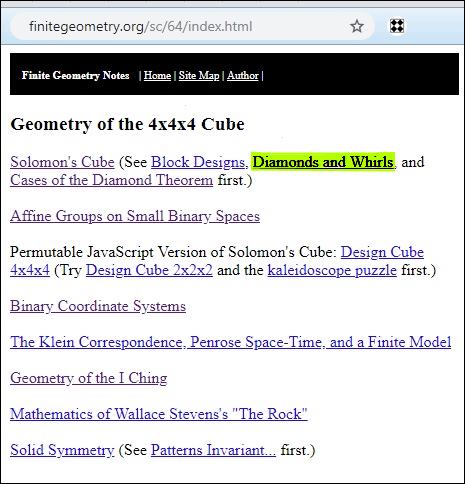
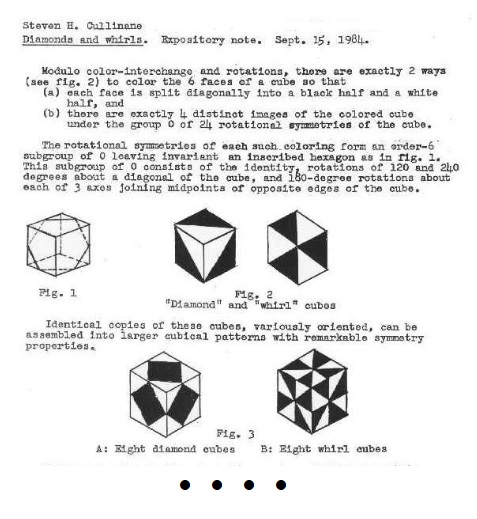



























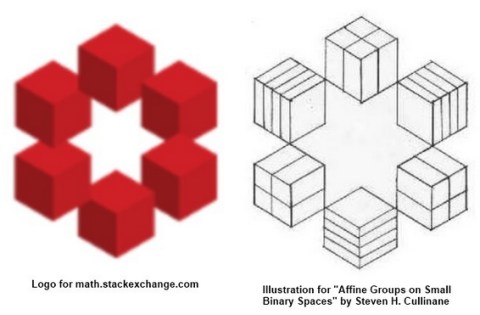






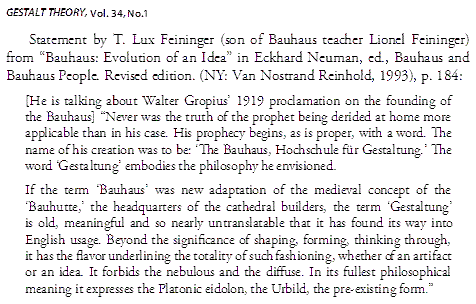


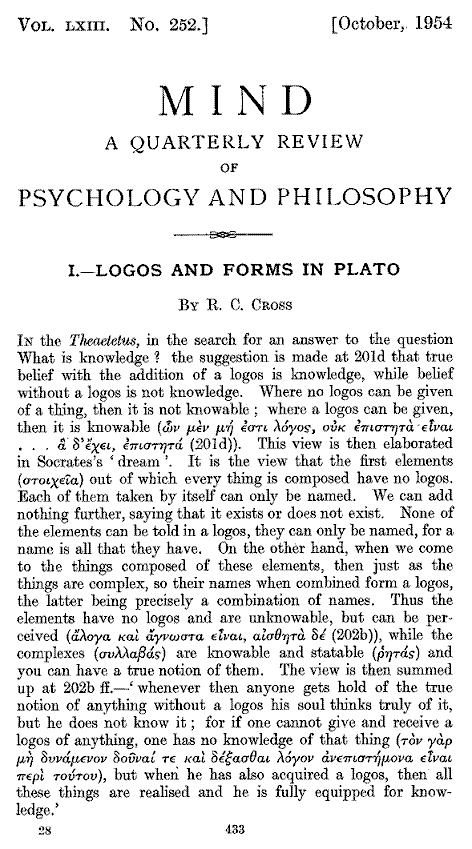








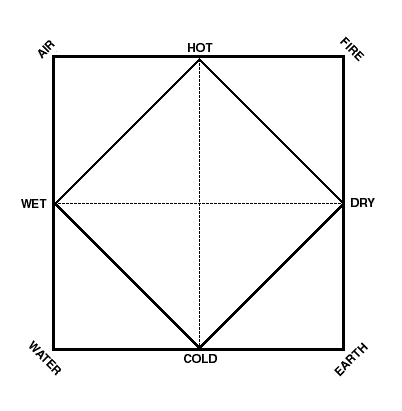




 He is an internationally recognized corporate identity consultant. Based in Hong Kong, his work for clients such as HongkongBank, IBM and Unilever is a major influence in Pacific Rim design.
He is an internationally recognized corporate identity consultant. Based in Hong Kong, his work for clients such as HongkongBank, IBM and Unilever is a major influence in Pacific Rim design.






















